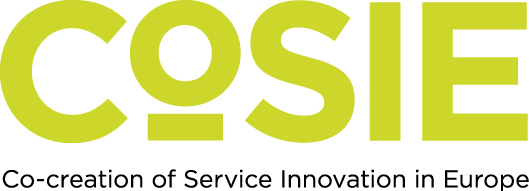Youth Co-empowerment
The amount of young people not in employment, education or training (“NEET”) is a growing problem all over the EU. In 2015, 66 000 of 18–29 year olds were NEET youths in Finland. It is of utmost importance to find more data about their situation and to pilot new ways to involve them in the society.
We want to test and create new ways to involve young people in order to increase their participation in society and to decrease exclusion. First, we want to let young people tell their stories to enlighten their current situation: What supports them in their life? What appears to be a hindrance in their way? We also want to understand, how young people experience and understand inclusion. What attracts them to participate and what prevents them from participating? We expect to find possible solutions for the most important challenges on how to activate young people both online and in real life.
Schedule

Geographic area and target groups
The main target audiences are municipalities in Finland and other national and international actors (public sector, NGOs and private sector), interested in involving young people. The pilot is targeting the youth around the city of Turku.
Collaborators
The main stakeholder is the city of Turku inside which there are many internal stakeholders within the organization as the different units that provide services to the youth, work in silos. The inclusion-related challenges found during this pilot will be included in the policy program of the city aiming to tackle youths’ marginalisation. The actual co-creation process involves city officials, local-level state officials, NGO’s and representatives of the target groups, marginalised youth.
Pilot actions
- In March 2019, we organised a Living Lab event for the people working with youth in the city of Turku. The event focused on finding the existing challenges and possibilities in the youth services of Turku. As a background for the pilot, we have collected videos on youths’ experiences and their opinions about inclusion by using the Community Reporter method.
- Based on this information, in April–May 2019, we organised hackathons for the youth. The youth gathered to formulate concrete challenges about what hinders inclusion in the city of Turku and to innovate services they would like to get from the city. Altogether 10 practical-level solutions were created during the hackathons.
- These fresh new ideas co-created by young citizens of Turku were presented to the Board of Child and Youth Welfare in the City of Turku as well as to the Smart and Wise City program that aims to prevent youth alienation.
- In August 2019, we launched the pilot training about encountering youth in collaboration with the youth panel of Kaupunkilähetys (City Mission). This co-creation pilot training for youth workers gives tools and ideas on how to meet young people face to face in the way they feel comfortable.
- In addition to the training, we created an evaluation questionnaire about the encountering skills of the employees working with youth. The form is available both in paper and in digital form.
- We are piloting the developed training for encountering youth with social services students in 2019 and with professionals in 2020.

Pilot results
We co-created ten different concepts in the hackathons that the steering group for Anti-Marginalisation Program have now analysed and selected for implementation. The steering group has decided to combine these concepts with recommended action points they have analysed elsewhere. Turku University for Applied Sciences is implementing one of the concepts together with the young people who attended the Hackathons. The next step is a design sprint where the different aspects of the selected concepts are used to make the services easier to approach and more available for the target group. In action this means designing a website where all services are presented, adding a chat opportunity and social media accounts.

Observations
We were told several times that it will be difficult to attract young people to join co-creation activities. This was proven wrong: our young participants were open, insightful and excited, regardless of their difficult backgrounds.
Also we were told that it may be difficult to find the target group and encourage them to tell their stories. Also this was proven wrong: young community reports were easy-to-reach and found the target group easily through their personal networks. They are more credible than a city official would be.
Thirdly, we did think about safety of the young participants that opened up their own lives in the workshops. We offered them the opportunity to talk hypothetically through the profiles, even though most of them did say that they could recognize themselves in the profiles.
The city officials have been very pleased with all the material produced. Particularly the profiles have been very helpful also for other purposes outside of the project. They are concrete and illustrate the complex nature of the marginalisation.
Future
We are discussing the opportunity to use the Living Lab method for the service development process in the City of Turku. At least we will offer them a manual containing recommendations, based on our learnings.
Learn more form lived experience stories gathered in the Finnish CoSIE pilot
CoSIE partners involved: The partners in this pilot are Turku University of Applied Sciences and Kuntaliitto.
Read more about the pilot from CoSIE Blogs
Engagement training of CoSIE won the challenge competition of Itla in Finland
Appropriate engagement with young people is vital in customer service work
How to get insight and co-create with young people in vulnerable life situations?
Co-designing Finnish Public Administration – Lessons from Different Levels and Fields of Governance
Contact: Hanna Kirjavainen, hanna.kirjavainen@turkuamk.fi
